Learn how to make gluten free flour tortillas at home with this easy recipe! Instead of xanthan gum, this recipe uses whole psyllium husk to create homemade tortillas that are super soft and flexible. They are great for rolling, folding and holding all your favorite fillings!
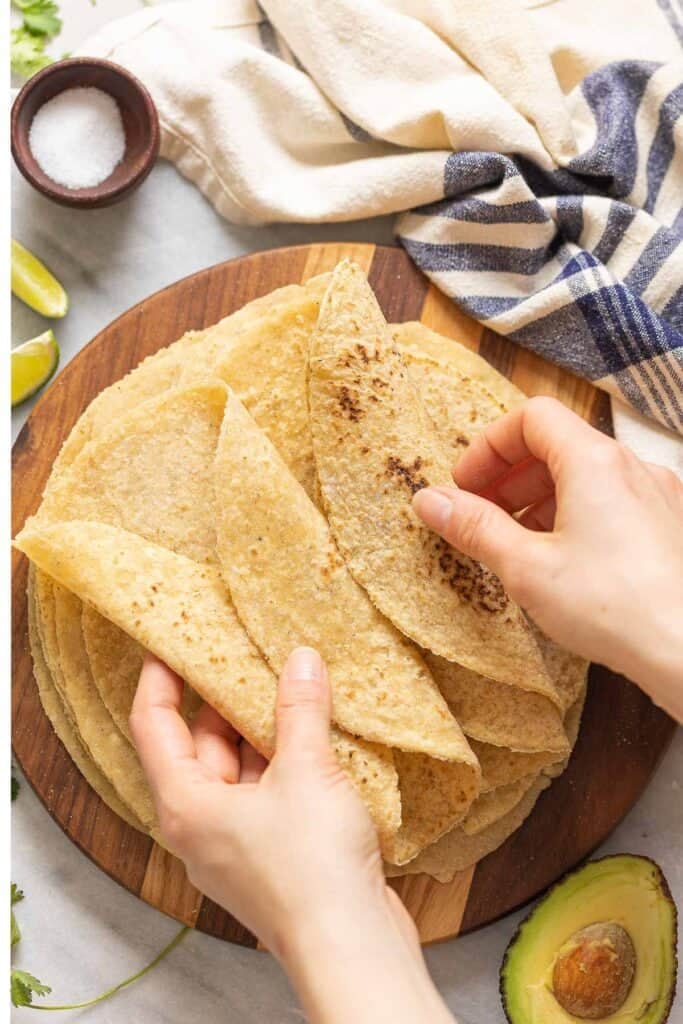
Gluten Free Flour Tortillas Recipe Highlights
- Easy to make: No special equipment or techniques needed. Simply mix, roll and cook a minute or two on each side.
- Rollable Dough: The dough is springy, flexible and easy to roll without breaking easily – a lot like a gluten-based dough.
- Flexible tortillas: Load up with your favorite fillings! These tortillas are super soft and pliable when fresh.
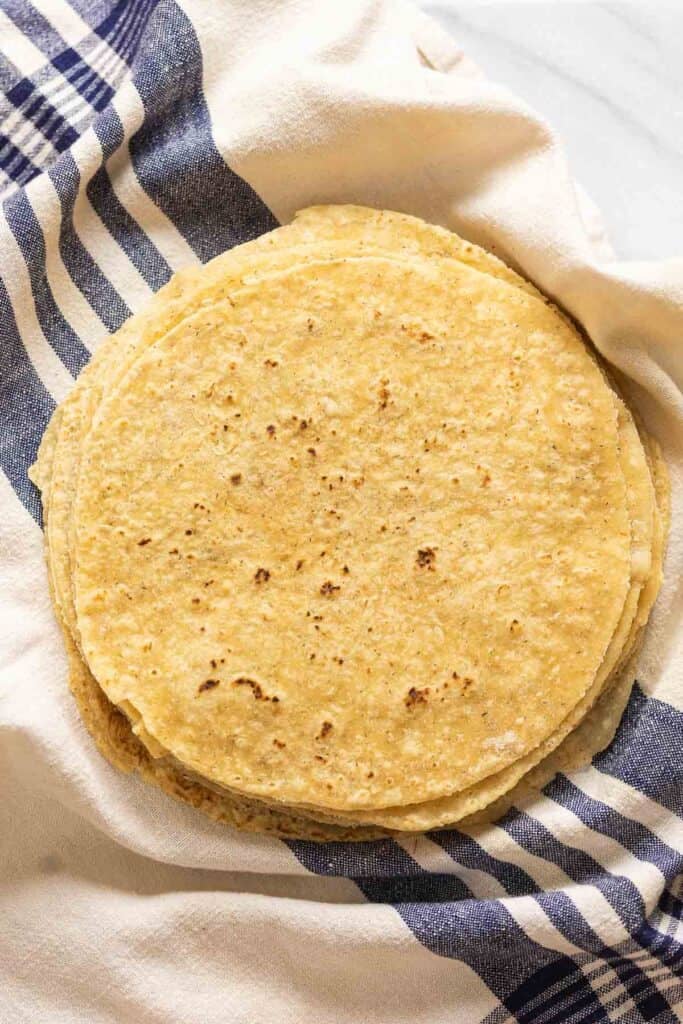
Ingredient Notes
- Gluten Free All Purpose Flour
- Use your favorite all-purpose gluten free flour blend.
- Whole Psyllium Husk
- Make sure to use whole psyllium husk and not psyllium husk powder. Powdered psyllium husk clumps quickly & easily when introduced to water and weighs more when measured by volume (meaning you need to adjust the amount).
- Apple Cider Vinegar + Baking Soda
- The acidity from the vinegar helps improve the texture of the tortillas by softening the proteins and hydrating the starches which makes the final product more tender and less chewy/stiff.
- Combined with baking soda (instead of baking powder), the two work together to create tiny bubbles in the dough that puff up when heated to create a lighter, airy tortilla.
- Fat
- You can use basically any type of oil or fat you’d like here, so long as it’s melted or in liquid form.
- Lard the most traditional fat choice for homemade tortillas – especially if you want an authentic taste!
- Olive oil tortillas are a bit chewier.
- Coconut oil tortillas will taste faintly of coconut oil.
- Vegetable oil & shortening are most similar to lard for texture.
- Butter (vegan butter too) is good if you want a faint buttery flavor.
- You can use basically any type of oil or fat you’d like here, so long as it’s melted or in liquid form.
What is Psyllium Husk?
Psyllium husk is a natural plant fiber made from the outer husks of seeds of the Plantago ovata plant. Though it is sometimes known as Indianwheat, it is in fact gluten free!
Thanks to its high fiber and mucilage content, it’s often used as a dietary supplement for supporting gut health. Find it as a key ingredient in things like Meta-Mucil and Fybogel.
The gel-like substance (mucilage) that you get when you mix psyllium and water is especially useful in gluten-free bread baking because of its ability to add structure and elasticity that you would normally get from gluten. Without replacing gluten with something like psyllium husk to bind and add flexibility, gluten-free doughs are usually wet and loose, like batter.
- FYI: Use psyllium husk for gluten free breads and doughs where you want your dough/final product to have a lot of structure. Use xanthan gum for cakes, cookies and gf bakes where moisture is more important than structure.
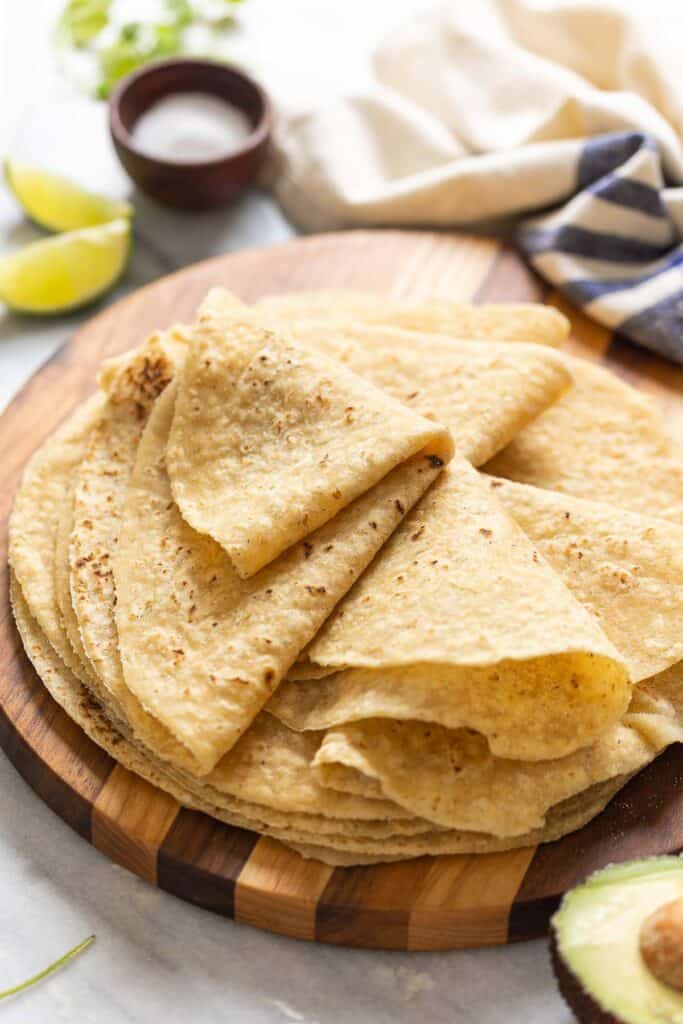
Bite Sized Recipe Steps
Make sure to scroll down to the recipe card for the full list of ingredients + more detailed steps.
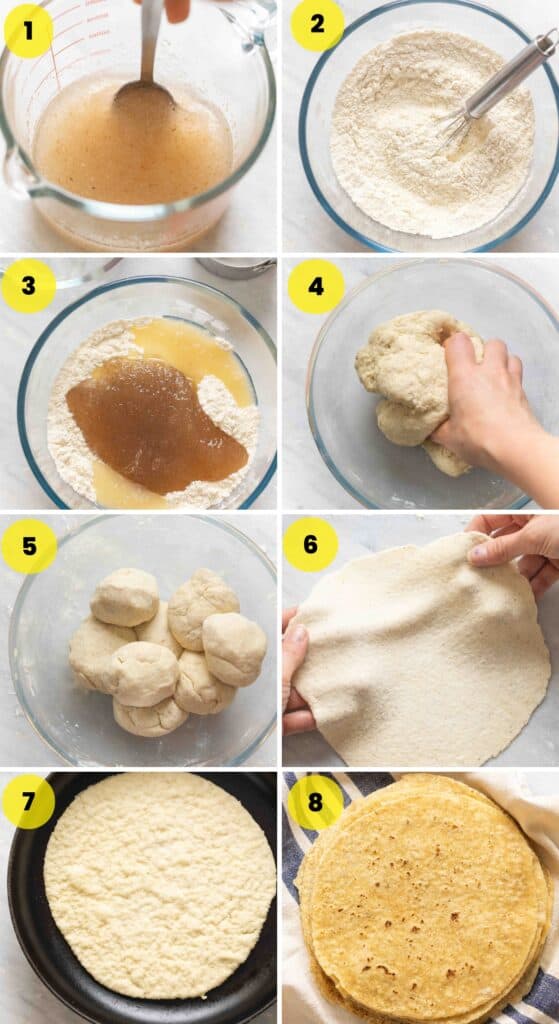
- Psyllium-gel: Whisk together whole psyllium husk & water then set aside while the gel thickens up.
- Flour Mixture: Whisk dry ingredients (flour, salt and baking soda).
- Combine Ingredients: Add the psyllium-gel, fat and vinegar to the flour mixture.
- Mix Dough: Mix together with a spoon or spatula until a floury dough forms, then use your hand to mix and knead until a soft dough forms.
- Divide: Turn the dough out onto a lightly floured surface then divide in 8-10 equal-sized portions.
- Roll: Roll out into a 8-9 inch circle. Make sure to lightly flour your work surface and dough as needed. Keep turning and flipping the dough as your roll to keep it from sticking.
- Or just use a tortilla press if you have one ready.
- Cook: Cook each side for 1-2 minutes or until little brown spots appear.
- Transfer & Repeat: Place cooked tortillas in a clean tea towel and keep covered while you cook the remaining tortillas. The heat and steam will keep them soft and pliable while working on the remaining dough.
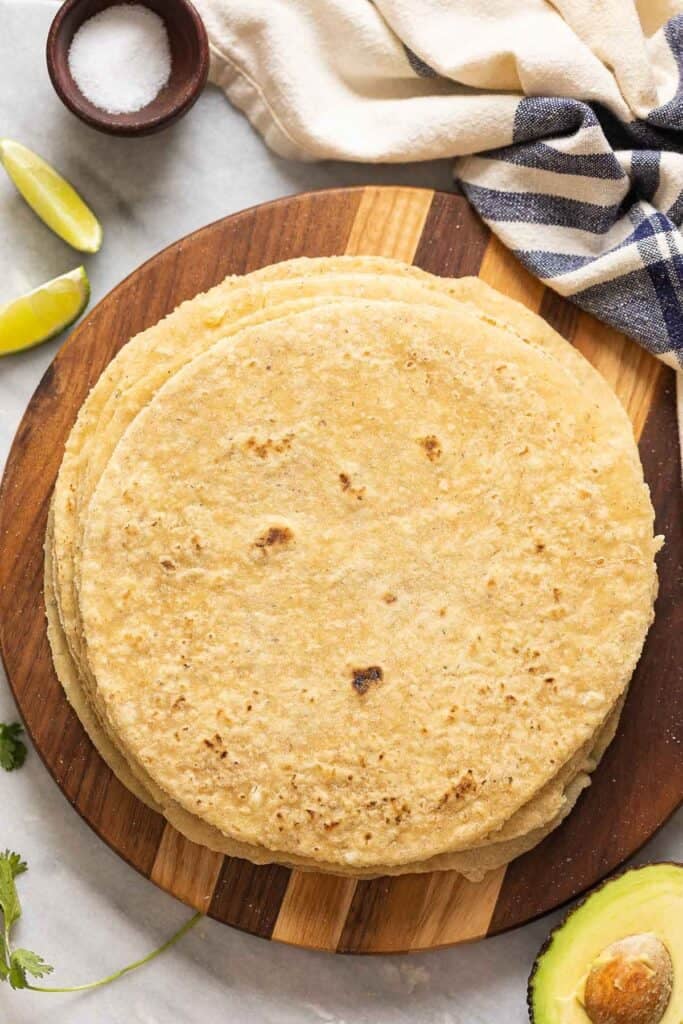
A Few Tips & Things to Keep in Mind
- Heat the pan: You want it hot, but not smoking. This helps the tortillas cook quickly, develop nice brown spots and release easily.
- Dry skillet: No need to oil your pan first. Just make sure to use a non-stick pan or well-seasoned cast iron skillet.
- Keep warm after cooking: Pile the cooked tortillas wrapped up in a clean kitchen towel or wrapped in foil. The heat and steam will keep them soft and warm while you finish cooking the rest.
- For evenly shaped tortillas: Roll out the dough out slightly larger than needed, then press a large plate or bowl down on top and trim off the excess dough with a knife to create a clean, round edge.
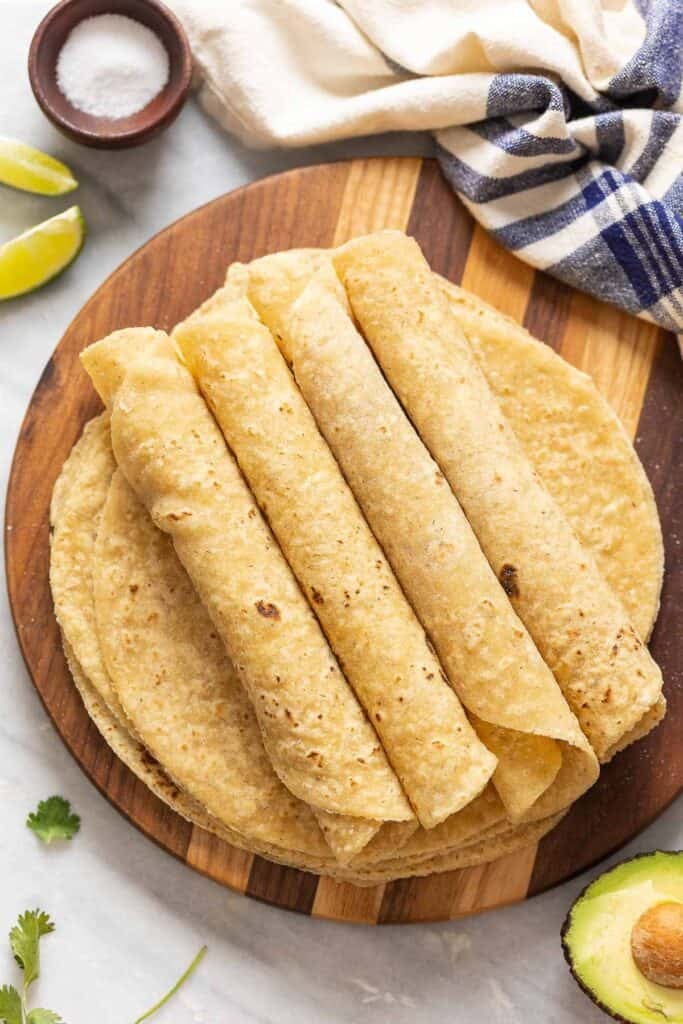
Serving Suggestions
A few tacos, burritos and wraps you might enjoy filled inside your soft gluten-free flour tortillas:
Enjoy!
Let me know if you try these Homemade Gluten Free Flour Tortillas! Leave a comment and review with your thoughts. I always appreciate the feedback and serving suggestions that you come up with!
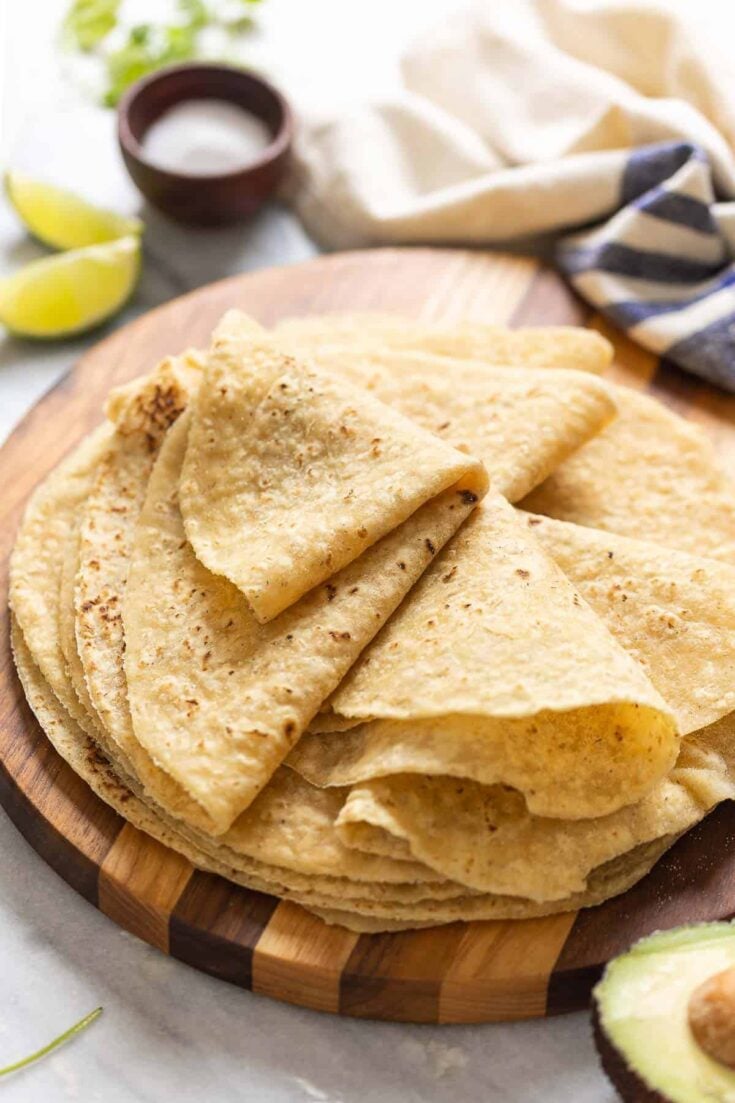
Gluten Free Flour Tortillas Recipe
These gf flour tortillas are soft, flexible & easy to make using a basic GF all-purpose flour blend and whole psyllium husk. Simply mix, roll and cook! Perfect for tacos, wraps, burritos and more.
Ingredients
- 1 1/4 cup warm water (300ml)
- 3 tbsp psyllium husk (14g)
- 2 cups gluten free all purpose flour (280g) + more for rolling
- 1 tsp salt
- 1/2 tsp baking soda
- 1 tsp apple cider vinegar
- 1/4 cup melted lard, butter, shortening or oil (56g)
Instructions
- Psyllium Mixture: In a medium bowl or measuring jug, whisk together the warm water and psyllium husk until combined. Set aside for about 5 minutes to let the mixture thicken up into a gel while you prep the remaining ingredients.
- Flour Mixture: In a large mixing bowl whisk together the flour, salt and baking soda.
- Mix Dough: Make a well in the middle of the flour mixture and add the oil, vinegar and psyllium mixture. Use a wooden spoon or stiff silicon spatula to combine the ingredients until a thick, shaggy-dough forms. Use your hands to continue mixing and kneading. Make sure to clump and squeeze the dough together to incorporate the drier, floury pieces. Keep kneading until you have a thick, soft, springy dough with no visible clumps of flour or psyllium.
- Divide: On a lightly floured surface, divide the dough into 8 equal pieces (about 80 grams each). Roll each portion into a ball shape, then place the dough balls back in the mixing bowl. Cover with a kitchen towel to keep the dough from drying out.
- Roll: Lightly flour a clean surface for rolling. Place a dough ball in the middle and use a rolling pin to roll the dough out into an 8-9-inch circle. Make sure to flip and rotate the dough often as you roll to keep it from sticking to the surface.
- Preheat: Heat a large, well-seasoned cast iron skillet or non-stick frying pan over a medium-high heat. No need to add oil - the pan should be dry.
- Cook: Gently place a tortilla in the hot pan. After about 30-60 seconds you should notice the dough puffing up around the surface. When you start to see brown spots appear on underside of the tortilla, flip and cook for about 45-60 seconds or until brown spots appear on the second side.
- Rest & Repeat: Remove the tortilla from the pan and place in a large, clean dish towel (the trapped heat & steam in the towel will keep the tortillas soft). Cover the tortilla with the towel and repeat with the remaining dough until done.
- Enjoy: Tortillas are best served fresh. Leftovers should be kept in a plastic bag or an airtight container for 2-3 days at room temp.
Notes
- Reheat & soften: Wrap tortillas in a damp paper towel and heat in the microwave for about 10 seconds. To reheat in a pan, sprinkle tortillas with water and warm over a medium heat until hot.
- For evenly shaped tortillas: For evenly shaped tortillas, roll out the dough out slightly larger than needed, then press a large plate or bowl down on top and trim off the excess dough with a knife to create a clean, round edge. I usually get one more tortilla at the end from all the excess dough.
- Make sure to use whole psyllium husk and not psyllium husk powder.

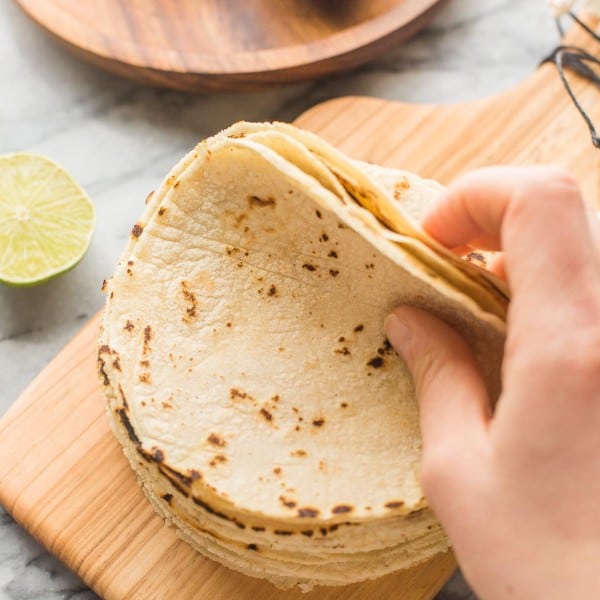
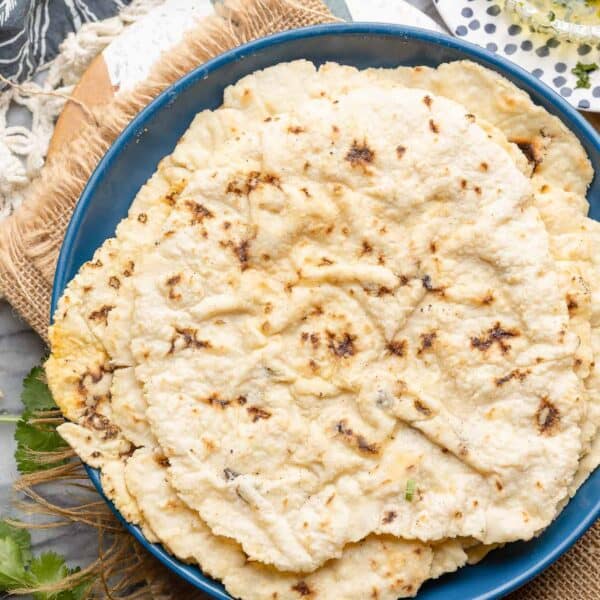
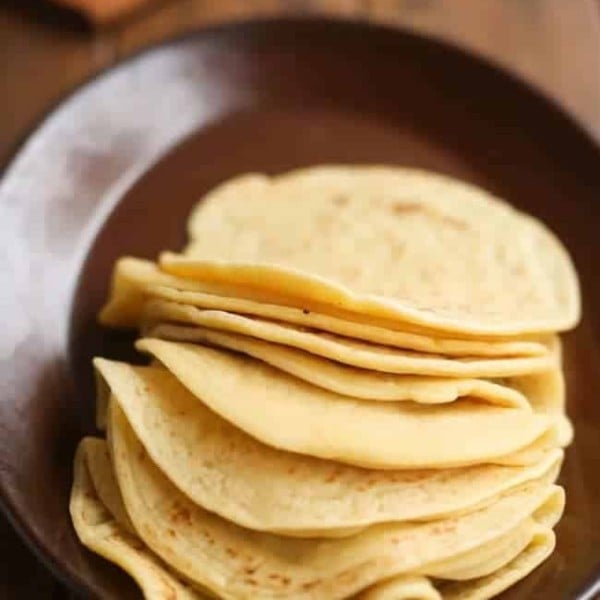
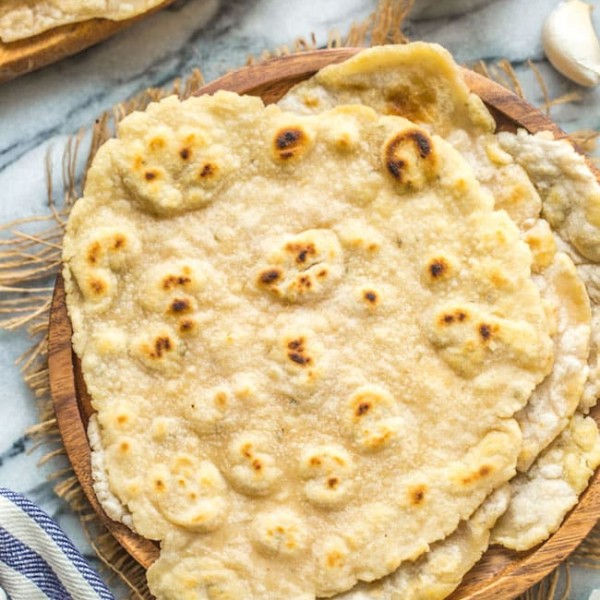
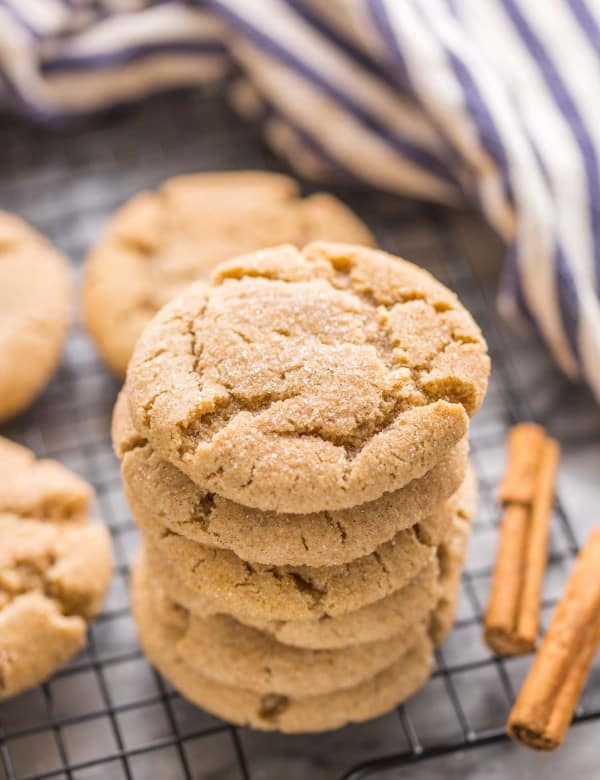

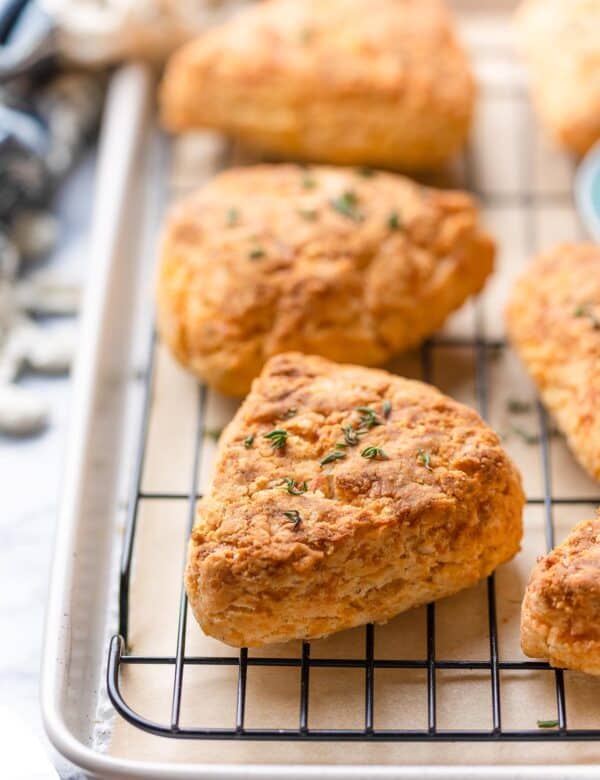

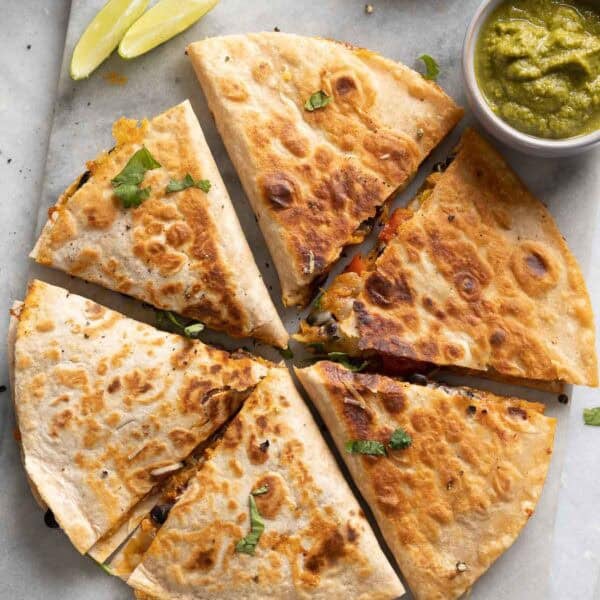

Ellen says
I think you don’t mean gluten flour flour tortillas. Gluten flour would be wheat flour. I think you mean gluten free flour.
Sarah Nevins says
Oops! You’re totally right – that’s definitely a typo! Thank you for pointing that out to me!